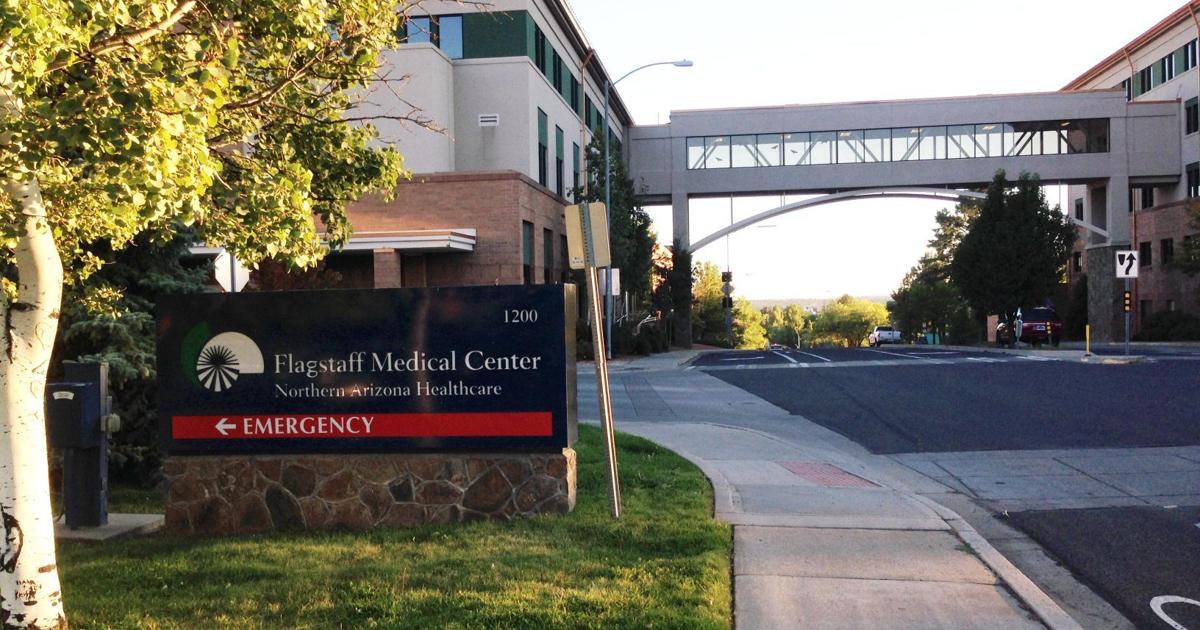
Northern Arizona Healthcare’s Cardiovascular Institute (CVI) in Flagstaff now offers translation services for its patients in Navajo and Spanish.
Each language requires a specific kind of interpretation, as seen in one translator’s experience. Priscilla Lyons, a certified medical assistant at CVI, is also the institute’s Navajo translator.
In her role as translator, Lyons stays with patients during their appointments, interpreting and answering questions. She said the service’s impact can be seen in a patient’s response.
“When you greet Navajo speakers in their language, they immediately feel they have family in the clinic, and are more open and relaxed to have their medical appointment,” she said.
Mackenzie Kirby, who works in community relations for CVI, said the institute has many Navajo-speaking patients. They often have a long commute (sometimes as much as a total of three or four hours) to receive medical care, so ensuring they understand their doctor is especially important.
People are also reading…
“It’s extra critical that when [patients] do travel…they leave feeling that they fully comprehended and understood what the take-home plan is for their health,” she said. “So the goal is to overcome hurdles and to improve access and care, and understanding of diagnosis and treatment.”
The most important thing for patients to know, Lyons said, is that “we are here to help you.”
She finds herself translating it to her patients more than anything else.
“I greet them with that statement and tell them, 'Like I was for my own parents, I am here to be your ears and your voice,’” she said.
Lyons lost both parents and her brother to COVID-19 recently. They are the primary reason for her work with CVI’s translation program.
“I feel strongly that I want to help patients who don’t understand their medical diagnosis or treatment in the way that my parents didn’t, because of language barriers,” she said.
She served as interpreter for her parents’ medical appointments and saw similar needs in Navajo-speaking patients at the clinic where she works.
“Many times in the past, I would ask patients who were Navajo speakers how their appointment went and what the doctor said and recommended, and they would reply, ‘Well, the doctor let me go home, so I must be OK,’” she said. “This shows a misunderstanding when there is a language barrier. I know with Navajo speakers that they need a lot of help with translating in order to help them understand their condition and their treatment.”
Lyons had been unofficially serving as an interpreter for doctors at CVI before receiving her certification. Her office manager suggested she get certified so there would be a more organized and formal way to respond to patients’ needs.
Certification can be difficult to schedule, as there is only one instructor and it takes three full days of work. Potential translators have to demonstrate fluency in both languages as well as in medical terminology and the appropriate ways to interpret it, according to Kirby.
Certain qualities of the Navajo language require a specific kind of interpretation. It being spoken makes translation apps impossible, for example. And since it is “very descriptive and literal,” Lyons said, she cannot use small terms.
“I use hand motions and gestures, and show the item, for example. Blood pressure is very similar to blood lab work, so I have to show them the blood pressure cuff when I am clarifying which thing we are discussing,” she said.
When she has to explain blood lab results, for example, Lyons said she explains in detail what each item is and what the individual patient’s score means.
“Many patients get confused about medications that include calcium if they also have a calcium buildup issue that they need to make lifestyle changes, including diet improvements, to address,” she said as an example. “Many times the doctors monitor their levels and add vitamins, and I have to explain to patients why this is necessary.”
She said a patient having questions at the end of an appointment means she’s done her job correctly.
“In my experience, if they don’t have questions it tells me they don’t understand, and I look for ways to clarify,” she said.
Interpretation also includes a cultural component that is especially important in medical discussions.
Lyons was raised with Navajo traditions, providing her an understanding of her patients’ concerns.
“Traditionally we would go to the local Indian Health Service clinic if you are very sick, but usually we would care for each other at home with traditional medicines. I grew up in Shonto and I understand where our traditional patients are coming from, but I also encourage them to trust in the medical care provided at CVI,” she said.
A common example is that, while having a living will or advanced directive is a best practice in medicine, discussing them is considered taboo in Navajo culture.
“To overcome this hurdle, I explain my own story of how I lost my own parents, and we did not have a living will or advanced directive in place and it made it very hard to make decisions as a family. I encourage patients to use my story as an example -- even though it’s taboo, it’s valuable to discuss,” she said.
No comments:
Post a Comment